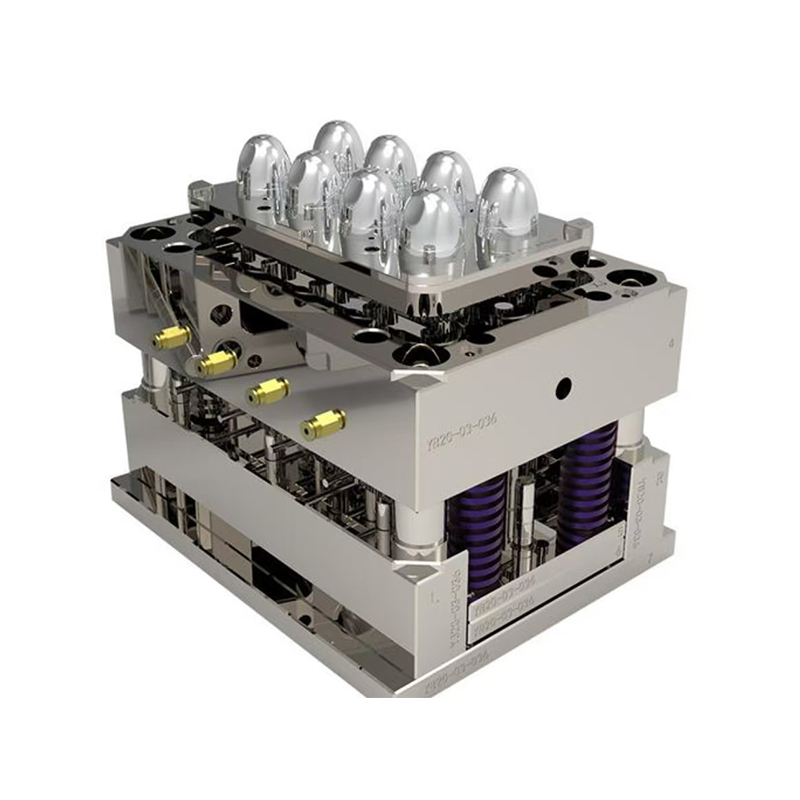What are the types of Engineering Machinery Castings?
Industry News-Casting technology plays a fundamental role in the production of industrial machinery, ensuring that large and complex components can be manufactured efficiently and with consistent quality. Among the various categories of industrial castings, Engineering Machinery Castings occupy a particularly important position. They are widely used in construction equipment, agricultural machinery, mining tools, and transportation machinery. These castings are known for their durability, strength, and ability to withstand extreme working conditions. This essay explores the main types of Engineering Machinery Castings, their characteristics, and their importance in the modern industrial landscape.

What Are Engineering Machinery Castings?
Engineering Machinery Castings refer to metal components produced by pouring molten metal into molds that define their shape and structure. After solidification, the casting is removed, cleaned, and finished according to its functional requirements. These castings are integral to the production of machinery parts such as frames, housings, engine blocks, gearboxes, and transmission systems.
The key advantage of Engineering Machinery Castings lies in their versatility. They can be produced in various sizes and shapes, from small precision parts to massive structural components. This adaptability makes casting a preferred method in heavy machinery industries that require robust and complex parts capable of handling mechanical stress and harsh environmental conditions.
What Are the Main Types of Engineering Machinery Castings?
There are several major types of Engineering Machinery Castings, each suited for specific applications. The most common types include gray iron castings, ductile iron castings, steel castings, and aluminum castings. Each type offers unique benefits related to strength, machinability, and cost.
How Are Gray Iron Castings Used in Engineering Machinery?
Gray iron is one of the most widely used materials for Engineering Machinery Castings. Its graphite microstructure gives it excellent vibration damping and good machinability, making it ideal for components such as machine bases, engine blocks, and transmission housings.
Gray iron castings are often chosen for parts that require high compressive strength but moderate tensile strength. Their ability to absorb vibrations helps reduce noise and prolong machine life, particularly in heavy-duty equipment. In addition, gray iron is relatively economical to produce, contributing to lower manufacturing costs without compromising performance.
Why Are Ductile Iron Castings Important?
Ductile iron, also known as nodular iron, represents an advancement over traditional gray iron. Its nodular graphite structure gives it superior toughness and elongation properties. As a result, Engineering Machinery Castings made from ductile iron can handle higher loads and impact stresses.
These castings are commonly used in components such as gears, crankshafts, suspension arms, and hydraulic cylinder bodies. Their combination of strength, wear resistance, and flexibility makes them suitable for machinery that operates under dynamic conditions. Furthermore, ductile iron offers good weldability and fatigue resistance, extending the lifespan of critical components.
What Role Do Steel Castings Play?
Steel castings are indispensable in heavy-duty applications where exceptional strength and durability are required. Among Engineering Machinery Castings, steel variants are known for their ability to withstand extreme forces and resist deformation under heavy loads.
Common applications include excavator arms, track shoes, and support brackets. The mechanical properties of steel castings make them suitable for parts exposed to high stress, abrasion, and impact. While they are more expensive to produce than iron castings, their superior mechanical performance justifies their use in demanding environments. Advances in alloying and heat treatment have further improved the toughness and wear resistance of steel castings used in engineering machinery.
How Are Aluminum Castings Used in Modern Machinery?
Lightweight materials such as aluminum are increasingly used in Engineering Machinery Castings where weight reduction is a priority. Aluminum castings offer excellent corrosion resistance, good thermal conductivity, and sufficient strength for medium-duty applications.
They are commonly used in parts like pump housings, engine covers, and gear cases. By reducing overall machine weight, aluminum castings help improve fuel efficiency and operational flexibility. Additionally, aluminum’s ability to dissipate heat makes it an excellent choice for components that operate in high-temperature environments.
What Are the Common Production Methods for These Castings?
Engineering Machinery Castings can be produced using various casting methods, depending on the complexity and size of the part. The main processes include sand casting, investment casting, and die casting.
-
- Sand casting is the most traditional and flexible method, ideal for large and heavy components.
- Investment casting provides high precision and surface finish, suitable for small or complex parts.
- Die casting is typically used for aluminum components that require tight tolerances and smooth surfaces.
- Each method has its advantages, and manufacturers often select the process based on production volume, material requirements, and cost considerations.
Why Are Engineering Machinery Castings Important for Industry Development?
Engineering Machinery Castings form the backbone of industrial equipment manufacturing. Their structural reliability ensures that machines can operate efficiently under demanding conditions. As industries move toward automation and high-performance machinery, the demand for precision and quality in cast components continues to grow.
Technological advancements, including computer-aided design and simulation, have enhanced the accuracy and efficiency of casting production. These innovations enable manufacturers to produce Engineering Machinery Castings that meet modern engineering standards while maintaining cost-effectiveness.
 En
En
 русский
русский Español
Español عربى
عربى Deutsch
Deutsch















